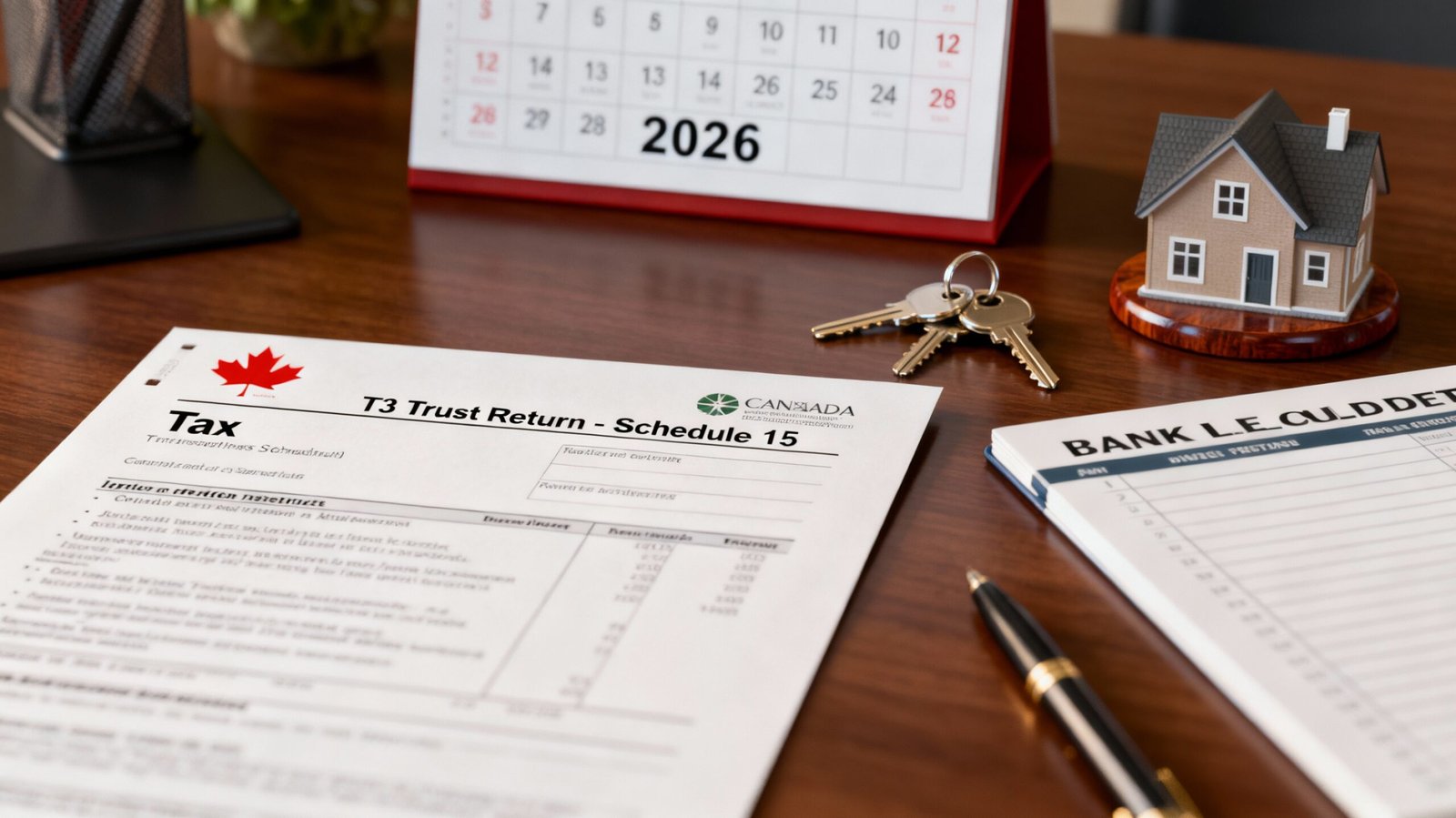If you’ve ever received a letter from the Canada Revenue Agency about your tax return, you know that sinking feeling in your stomach. The CRA reviews approximately 3 million income tax returns each year to verify that income amounts, deductions, and credits are reported correctly and properly supported. Personal income tax reviews represent a standard part of Canada’s tax administration process, designed to promote compliance and awareness of tax laws.
Canada’s tax system operates on the self-assessment principle, where taxpayers calculate and report their own tax obligations. Getting a refund doesn’t mean your return won’t be reviewed or audited. Some returns are selected completely at random for review, while others may trigger closer examination due to specific claims or deductions.
Getting a letter from the CRA about a tax review can feel intimidating. Only a small percentage of returns undergo manual reviews after tax season, but the CRA generally has up to three years from your original assessment date to conduct a review. When fraud or misrepresentation is suspected, there’s no limitation period for review.
This guide explains what happens during a CRA tax review, how it differs from an audit, and what steps you should take if your return is selected. Whether you’re currently facing a review or simply want to be prepared, understanding this process is essential for dealing with Canada’s tax system with confidence.
What is a CRA tax review and how is it different from an audit?
When you receive correspondence from the CRA stating your tax return is being reviewed, there’s no need to panic. A tax review is not the same as an audit – it’s a routine verification process that helps maintain the integrity of Canada’s tax system.
Understanding the self-assessment system
The foundation of Canada’s tax framework rests on the self-assessment principle. Under this system, individual taxpayers are responsible for ensuring the information reported on their returns is accurate and complete. This approach requires you to:
- Report all sources of taxable income (employment, investments, self-employment)
- Claim appropriate deductions and credits
- Calculate whether you owe tax or are entitled to a refund
The CRA processes approximately 27 million personal income tax returns annually. This self-reporting model comes with inherent risks. Without adequate administrative controls, the system could be vulnerable to both honest mistakes and deliberate non-compliance.
To mitigate these risks, Canada’s self-assessment approach is supported by accessible client services, extensive withholding requirements, mandatory third-party reporting, and advanced technologies for administrative and intelligence-gathering purposes.
CRA review vs. CRA audit: Key differences
Reviews and audits serve different purposes in the tax administration process:
Personal income tax reviews:
- Are typically less intrusive and more routine in nature
- Focus on specific items on your return rather than your entire financial situation
- Verify that amounts claimed can be properly supported
- Usually involve simple document verification rather than in-depth analysis
- Often conducted by mail or electronically
- Primarily aim to confirm accuracy of information reported
Audits:
- More extensive examination of financial records
- Usually reserved for businesses or complex tax situations
- Involve a detailed investigation of your financial affairs
- May require in-person meetings with CRA representatives
- Typically more time-consuming and resource-intensive
- Can happen at any time if fraud is suspected
A review may lead to an audit if the CRA isn’t satisfied with your response. Additionally, receiving a refund doesn’t guarantee your return won’t be reviewed later.
The CRA emphasizes this distinction clearly: “When we select your return for review, it does not represent a tax audit”. Reviews are part of the normal verification process that helps maintain tax system integrity.
Why reviews are part of the tax process
Personal income tax reviews serve several important functions in Canada’s tax administration system:
They help confirm that income amounts, deductions, and credits are reported correctly and can be properly supported. The CRA reviews about 3 million income tax returns every year for this purpose.
They help identify potential discrepancies between what you’ve reported and information provided by third parties. Employers providing T4 slips and organizations issuing T5 slips for investment income must file this information directly with the CRA. This regulated system of third-party reporting allows the CRA to verify income reported by matching it against information from these sources.
Reviews help refine the CRA’s focus on areas of non-compliance. The agency continually adjusts its review programs based on results and identified areas where taxpayers may not be following tax rules correctly.
They support the CRA’s risk-based approach to compliance. By selecting returns based on specific criteria, the CRA can effectively allocate resources toward areas with higher non-compliance risk.
Finally, reviews serve as an educational tool, helping taxpayers understand their obligations and promoting voluntary compliance.
Should you receive a review letter, BOMCAS Canada can provide assistance and guidance throughout the process. With their expertise in personal income tax reviews, they can help you understand what’s being requested and how to respond appropriately.
The CRA processes most returns without conducting a manual review so that notices of assessment can be issued quickly. All returns are screened by their computer system and may be subject to review at a later date.
Why your return might be selected for review
The CRA doesn’t simply pick tax returns out of a hat when conducting reviews. Understanding what prompts these selections can help you prepare better and potentially reduce your chances of facing scrutiny. The review process follows specific patterns and criteria worth knowing about.
Random selection vs. red flags
Not all personal income tax reviews stem from suspected errors or issues. The CRA employs two primary methods when selecting returns for examination:
Random selection: A certain percentage of returns are chosen completely at random as part of the CRA’s regular compliance monitoring. This randomized approach helps the agency evaluate overall compliance levels and refine their review programs annually based on identified areas of non-compliance.
Red flag detection: The CRA uses sophisticated assessment systems to identify returns that appear incomplete, inaccurate, or otherwise suspicious. Their computer programs can zero in on tax returns that don’t conform to expected patterns. These are the “high-risk” outliers that attract attention.
The selection process remains identical regardless of how you file your return—whether on paper or electronically through EFILE and NETFILE. Your filing method won’t increase or decrease your chances of being selected.
Common triggers: large deductions, unusual claims
Several specific elements in your tax return may increase the likelihood of a CRA review:
Discrepancies with third-party information: If what you report doesn’t match information the CRA has received from employers, financial institutions, or other sources, your return may be flagged.
Unusually large deductions or credits: The CRA looks for consistency in your tax returns. A sudden, dramatic increase in claimed deductions compared to previous years often triggers scrutiny. For example, claiming $13,933.60 in car expenses against $69,668.01 in sales will likely prompt questions.
Industry-specific targeting: Businesses dealing predominantly in cash (restaurants, construction, small retail) face higher review rates. The CRA identifies these as part of the “cash economy” with greater potential for unreported income.
Rounded numbers: Exact amounts including cents appear more credible than convenient round numbers, which signal estimated rather than precisely tracked expenses. The CRA’s systems flag returns with too many perfectly rounded figures.
Excessive claims: Certain deductions attract particular attention, primarily:
- Employment expenses
- Moving expenses
- Medical expenses (especially large claims)
- Foreign tax credits
- Home office deductions that seem unreasonably large
Your compliance history matters
Your past interactions with the CRA significantly influence future review probability. The agency considers:
Previous review outcomes: If you’ve been reviewed before and passed without issues, you’re less likely to be selected again. Conversely, if errors were found in past reviews, expect increased scrutiny in subsequent years.
Filing patterns: Frequent errors or late filings raise red flags. A history of tax law violations or previous penalties makes future reviews more probable.
Consecutive losses: Businesses or rental properties reporting losses for several consecutive years often face reviews. The CRA questions why anyone would continue operating consistently unprofitable ventures.
Pre-assessment reviews: For taxpayers with problematic compliance histories, the CRA may implement pre-assessment reviews—examining claims before even processing the return. This represents a higher level of scrutiny than standard post-filing reviews.
Keeping detailed, accurate records for at least six years is essential, as the CRA may select your return for review at any time during this period. If you’re uncertain about your review situation or need guidance, contact BOMCAS Canada for assistance with your personal income tax audit concerns.
Types of CRA Tax Reviews You Might Face
Understanding the CRA review system can significantly reduce stress if your tax return falls under scrutiny. The Canada Revenue Agency employs several distinct review programs, each serving specific compliance objectives and occurring at different times in the tax processing cycle.
Pre-Assessment Review
Pre-assessment reviews take place before your notice of assessment is issued. This front-line verification happens early in the process—typically between February and July after you submit your return.
During this initial review, the CRA examines specific deductions and credits you’ve claimed to ensure they’re legitimate and properly supported by documentation. This proactive approach allows the agency to identify potential issues before officially processing your return.
What makes this review distinctive is its timing—occurring during tax season when the CRA faces its highest volume of submissions. A pre-assessment review may slightly delay your assessment and any refund you’re expecting.
Processing Review
Processing reviews happen after your notice of assessment has been issued. These examinations typically occur between June and November.
The CRA has already processed your return and either issued a refund or confirmed an amount owing at this stage. They may still review specific elements of your return to verify their accuracy. The processing review program looks similar to pre-assessment reviews in terms of what’s being examined, with the primary difference being when it occurs.
Should the CRA discover discrepancies during this review, they may issue a notice of reassessment adjusting your tax obligation. These reviews form a significant portion of the CRA’s compliance activities.
Matching Program
The matching program represents one of the CRA’s most effective verification tools, running from approximately September through March. The CRA compares information on your tax return against data provided by third parties.
These third-party sources include:
- Employers (T4 slips)
- Financial institutions (T5 slips)
- Investment firms
- Other income sources reported to the CRA
About 80% of Canadian income tax filing operates on what could be called an “honor system” initially. The CRA processes most returns without immediate in-depth scrutiny to issue assessments quickly. When tax season slows down, they conduct matching reviews to identify discrepancies.
If the matching program reveals unreported income or incorrect amounts, the CRA typically reassesses your return automatically, often resulting in additional tax owing plus potential interest charges.
Specialized Reviews (e.g. Foreign Tax Credit)
Beyond standard reviews, the CRA conducts specialized examinations of particular areas deemed high-risk for non-compliance. The Special Assessments Program conducts these more thorough reviews either before or after your notice of assessment.
Foreign tax credit claims have become an area of increasing CRA scrutiny in recent years. The agency has implemented stricter documentation requirements, particularly regarding proof of US taxes paid. This heightened attention reflects the CRA’s focus on international tax compliance.
For taxpayers with foreign income, preparing for potential reviews means maintaining documentation of:
- Foreign tax payments
- Supporting calculations
- Official tax receipts from foreign jurisdictions
Foreign tax credit reviews frequently demand more detailed documentation than standard reviews. Responding properly requires particular attention to detail.
Regardless of which review program examines your return, the CRA will contact you or your authorized representative by telephone or letter if they need additional information. Each review type follows similar response procedures, though documentation requirements vary based on what’s being verified.
For assistance with any type of CRA review, contact BOMCAS Canada for expert guidance on your personal income tax audit concerns.
What to Expect in a CRA Review Letter
Receiving a letter from the Canada Revenue Agency might initially cause your heart to skip a beat. Understanding what these review letters contain and how to interpret them can significantly reduce anxiety and help you respond appropriately.
What the Letter Includes
Every CRA review letter contains specific information regarding what the agency wants to verify in your tax return. You’ll notice a reference number in the upper right corner of the letter, which is crucial to include in all your correspondence with the CRA.
The letter typically contains:
- Details about which specific claims or deductions are being reviewed
- Instructions on what supporting documents you need to provide
- A deadline for your response (usually 30 days)
- Contact information at the bottom of the letter for questions
- Case number or reference number unique to your review
The CRA review letter serves as their official request for clarification or additional information about elements in your tax return. The CRA attempts to verify your claim based on information already in their files. Only when more details are needed do they reach out via letter or telephone.
How to Interpret Boilerplate Language
Review letters contain pages of standardized (boilerplate) language that you’ll need to parse through carefully. Much of this language won’t apply to your specific circumstance.
For instance, a review letter concerning moving expenses might include instructions about temporary living expense documentation, regardless of whether you actually claimed such expenses. This can cause unnecessary alarm for taxpayers unfamiliar with these standardized formats.
Focus on what specifically applies to your situation. Carefully read through the entire letter to identify exactly which items the CRA is questioning and what supporting documentation they require for those specific items.
Understanding Your 30-Day Response Window
CRA review letters require a response within 30 days. This timeline can feel particularly stressful if you’re traveling or need time to gather necessary documentation.
The CRA is often understanding about time constraints. If you need an extension, call the telephone number found at the bottom of the letter to explain your situation and request additional time. The CRA’s review letter phone lines are generally available Monday to Friday from 8 am to 5 pm Eastern Time.
The worst approach is ignoring the letter entirely. Failure to respond typically results in the CRA disallowing your entire claim, which could lead to a significant tax reassessment. Non-response can result in the matter being sent to collections, potentially resulting in thousands of dollars in unexpected tax bills.
When responding to the CRA’s request, include all receipts and documents requested that apply to your situation. If you’re missing certain receipts or documentation, provide a written explanation or call the number on the letter to explain your circumstances. Scanned documents can be submitted online through My Account for Individuals or Represent a Client.
When your review letter seems complex or you’re uncertain about how to proceed, contact BOMCAS Canada for guidance with your personal income tax audit. Their expertise can help ensure you provide the correct information in the proper format, potentially preventing further complications with your tax review.
How to Respond to a CRA Review Request
Responding promptly to a CRA review request is crucial for avoiding unnecessary penalties and complications. The CRA allows 30 days from the date of their letter for you to gather and submit the requested information. Being organized and thorough in your response can make a significant difference in the outcome of your personal income tax review.
Gathering and Organizing Documents
When you receive a review letter, carefully read what specific documentation the CRA has requested. Focus exclusively on collecting exactly what they’ve asked for—nothing more, nothing less. Your approach should be systematic:
- Group similar documents together (like medical receipts or tuition slips)
- Create a summary page that tallies costs to match claimed amounts
- Ensure documents clearly support the specific claims under review
- Make copies of everything—never send originals
Consider creating an organized package with all relevant documentation arranged in a logical manner. This organization ensures there’s no room for misinterpretation and helps CRA agents quickly verify your claims.
What to Do if You’re Missing Receipts
Missing documentation happens to many taxpayers. If you can’t locate specific receipts or supporting documents, the CRA recommends several approaches:
Include a written explanation detailing why the documentation is unavailable. You can also call the number at the bottom of the CRA letter to explain your situation. Don’t ignore the request simply because you’re missing some documents.
The CRA may accept alternative documentation, such as bank statements, to verify expenses. You should always try to obtain copies of original documents from the parties that created them—like financial institutions or suppliers.
How to Submit Your Documents
The CRA offers several methods for submitting your documentation. Most convenient is their secure online service through My Account for Individuals or Represent a Client. This electronic submission process provides:
- A confirmation number for your records
- Reference numbers for future communications
- Ability to keep your original documents
When submitting online, ensure your documents are scanned with a resolution of 200 dpi or lower, and saved in acceptable formats (.pdf, .doc, .jpg, etc.). The total size of your submission cannot exceed 150MB, with a maximum of 10 files per session.
Tips for Clear Communication with CRA
Effective communication with the CRA can streamline the review process. Clear communication reduces the likelihood of further questions or escalation.
Always include the reference number from the upper right corner of the CRA letter in all communications. If you need more time to respond, call the number provided on your letter—the CRA can often grant extensions.
Respond as early as possible rather than waiting until the deadline. Being proactive demonstrates your willingness to cooperate, which can positively influence how your case is handled.
Maintain a professional, cooperative tone with CRA representatives. If your tax situation is complex or you’re uncertain about how to proceed, contact BOMCAS Canada for assistance with your personal income tax audit.
What happens after you submit your documents
After submitting your documentation to the CRA, many taxpayers enter what feels like a mysterious black hole of waiting and wondering. The submission marks just the beginning of the next phase in the personal income tax review process, not the end.
CRA’s review timeline
Once your documents are received, the CRA first confirms acceptance with a confirmation number if submitted electronically. They scan all submitted files for viruses as a security measure. Any files that cannot be scanned will be securely deleted, and you’ll receive instructions for resubmitting through an alternative method.
The waiting period after submission typically extends several months before you hear about the results of their review. CRA officers examine your documentation against the claims made on your return during this timeframe. Unlike the 30-day deadline imposed on taxpayers, the CRA operates without strict timeline constraints on their end.
Patience is essential during this phase. Avoid contacting the CRA repeatedly about status updates, as this rarely expedites the process. Don’t assume silence means acceptance – the review remains actively underway.
Possible outcomes of a review
Upon completing their examination, the CRA typically issues one of several determinations:
- Confirmation of original assessment – Your documentation satisfied their questions, and no changes are made to your tax situation (ideal outcome)
- Minor adjustments – Small revisions to your claimed amounts that slightly affect your tax position
- Substantial reassessment – Significant changes to your claimed deductions or credits, potentially resulting in additional taxes owing plus interest
- Complete disallowance – Rejection of the entire claim under review, often resulting from insufficient documentation
Should the CRA issue a substantial reassessment, consider consulting a tax professional immediately to verify their findings. Incorrect CRA determinations can be successfully challenged through the appeals process by filing a Notice of Objection.
When a review turns into an audit
Occasionally, what begins as a routine review escalates into a more detailed audit. This progression typically occurs when:
Your response raises more questions than it answers. According to tax professionals, CRA audits increasingly operate under a “review to contest” approach, focusing on reassessment rather than simple verification. By the time many taxpayers recognize an in-audit conflict, the CRA has already built its case and shaped the narrative.
Evidence suggests potential non-compliance beyond the specific items under review. The failure to identify and address audit-stage tension early carries significant risk.
Your compliance history indicates patterns of concern. Data shows audit volume and intensity are increasing, with a 2023 survey finding 79% of tax executives expect audits to nearly double in intensity and scope within the next two years.
If your personal income tax review appears to be expanding in scope or complexity, contact BOMCAS Canada promptly for professional guidance. Their expertise can help navigate the transition from review to audit, potentially preventing unfavorable outcomes.
How to avoid future tax reviews or audits
While dealing with a tax review is manageable, preventing one altogether is certainly preferable. The CRA processes most returns quickly to issue assessments in a timely manner, yet taking proactive measures can significantly reduce your likelihood of being selected for review.
File accurately and on time
Filing by the deadline is crucial—late submissions incur penalties of 5% on your balance owing plus 1% for each additional month, up to a maximum of 12 months. Even if you can’t pay immediately, file on time to avoid these penalties. Complete disclosure of all income sources is essential, including tips, platform economy earnings, side jobs, and foreign investments.
Keep detailed records for 6+ years
According to CRA guidelines, you must maintain all required records and supporting documents for at least six years from the end of the last tax year they relate to. For businesses, detailed documentation of every transaction is mandatory—including dates, amounts, and parties involved. The CRA may request these records during a review at any time during this period.
If you’re self-employed, implementing good record-keeping practices prepares you for potential CRA information requests. For cash-heavy businesses, professional bookkeeping software becomes especially valuable in documenting transactions properly.
Avoid common mistakes and tax schemes
Several common errors can trigger CRA attention:
- Using rounded numbers rather than exact amounts (e.g., $3,483.40 instead of $3,464.34)
- Claiming personal expenses as business deductions
- Reporting several consecutive years of business losses
- Paying excessive salaries to family members
- Missing T-slips or information slips
Use tax software or a professional
CRA-certified tax software significantly reduces calculation errors and ensures your return meets the agency’s specifications. These programs automatically apply correct tax rates based on your province and business type, reducing potential errors in reporting. Tax software provides built-in error detection tools that flag common mistakes before submission.
Should your tax situation prove complex, consider consulting a tax professional. BOMCAS Canada can provide guidance for your personal income tax concerns, helping ensure compliance and minimizing review risk.
When to seek help from a tax professional
Tax matters can quickly go from straightforward to complicated, especially when the CRA increases its scrutiny of your return. Knowing when to call in professional help can save you significant time, money, and stress.
When your case is complex
Professional assistance becomes essential when dealing with cross-border transactions, international tax planning, or foreign exchange management. If you’re facing allegations of tax evasion or fraud, professional representation becomes critical to avoid severe penalties and legal consequences.
Receiving an audit notice rather than a simple review letter indicates a more serious examination that warrants professional guidance. Consider seeking help when dealing with large tax debts, as professionals can negotiate fair repayment terms with the CRA.
How BOMCAS Canada can support you
BOMCAS Canada offers specialized expertise in dealing with Canadian tax laws. Their team of professionals provides:
- Expert audit representation and support throughout the process
- Post-filing assistance for any CRA inquiries or notices
- Up-to-date knowledge on frequently changing tax rules and regulations
- Personalized service tailored to your specific tax situation
Their certified accountants remain closely involved in addressing your tax challenges, bringing industry-specific knowledge to resolve your issues effectively. Through their personalized approach, they ensure each client receives solutions customized to their exact needs.
Benefits of audit representation
Professional tax audit representation offers numerous advantages beyond just peace of mind. It ensures your rights are protected throughout the audit process. Their expertise helps prevent you from making errors that could escalate penalties or lead to more serious legal complications.
Having professional representation often leads to better financial outcomes, sometimes reducing tax debt by thousands of dollars. The investment in professional assistance frequently yields returns through avoided penalties and recovered overpaid taxes.
Contact BOMCAS Canada for all better understanding or help regarding your Personal income tax Audit – their expertise ensures that any issues are addressed promptly and effectively, protecting your interests during CRA reviews.
Conclusion
Getting a CRA tax review certainly feels intimidating for many Canadian taxpayers. Understanding the process helps reduce anxiety and promotes better tax compliance. Tax reviews serve as an essential component of Canada’s self-assessment system, ensuring accuracy and fairness while maintaining integrity throughout the tax administration process.
A review differs significantly from an audit. Most reviews simply verify specific items on your return rather than examining your entire financial situation. Whether selected randomly or flagged due to discrepancies, large deductions, or unusual claims, responding promptly and thoroughly remains your best approach.
Documentation stands as your strongest defense during any CRA inquiry. Maintaining organized records for at least six years, reporting all income sources accurately, and avoiding common pitfalls like rounded numbers or excessive deductions will significantly reduce your review risk. Filing on time with exact figures and proper supporting documentation demonstrates your commitment to tax compliance.
Should you receive a review letter, read it carefully, gather the requested documentation, and respond within the 30-day window. Missing receipts or complex situations warrant a proactive approach – contact the CRA directly or seek professional assistance before the deadline expires.
BOMCAS Canada offers specialized expertise for taxpayers facing reviews or audits. Their professional guidance helps address complex tax situations, protect your rights, and potentially achieve better financial outcomes. Tax professionals understand CRA procedures and can effectively communicate with tax authorities on your behalf.
The Canadian tax system ultimately relies on honest reporting and proper documentation. Knowledge about what triggers reviews, how to respond effectively, and when to seek professional help empowers you to handle any tax review confidently. Preparation beforehand saves considerable stress afterward – approach your tax obligations with diligence and accuracy each year.
Key Takeaways
Understanding CRA tax reviews can transform a stressful experience into a manageable process that protects your financial interests.
• Reviews aren’t audits – CRA reviews are routine verification processes that focus on specific claims, not comprehensive financial examinations like audits.
• Response timing is critical – You have 30 days to respond to review letters; ignoring them can result in complete claim disallowance and significant tax bills.
• Documentation is your defense – Keep detailed records for 6+ years and organize exact receipts to support all deductions and credits claimed on your return.
• Common triggers include red flags – Large deductions, rounded numbers, consecutive business losses, and discrepancies with third-party information increase review likelihood.
• Professional help prevents costly mistakes – Complex cases, missing documentation, or escalating reviews warrant tax professional assistance to protect your rights and achieve better outcomes.
The key to successfully navigating CRA reviews lies in preparation, prompt response, and knowing when professional expertise can save you time, money, and stress in dealing with Canada’s tax administration system.
FAQs
Q1. What triggers a CRA tax review? A CRA tax review can be triggered by random selection, discrepancies with third-party information, unusually large deductions or credits, industry-specific targeting, or a history of compliance issues. The CRA uses sophisticated systems to identify returns that appear incomplete, inaccurate, or suspicious.
Q2. How long do I have to respond to a CRA review letter? Typically, you have 30 days from the date of the CRA review letter to respond. If you need more time, you can contact the CRA using the phone number provided in the letter to request an extension.
Q3. What should I do if I’m missing receipts for a CRA review? If you’re missing receipts, provide a written explanation detailing why the documentation is unavailable. In some cases, the CRA may accept alternative documentation, such as bank statements. Don’t ignore the request simply because you’re missing some documents.
Q4. How long should I keep my tax records? You should keep all required records and supporting documents for at least six years from the end of the last tax year they relate to. This ensures you have the necessary documentation if the CRA selects your return for review during this period.
Q5. When should I seek professional help for a CRA review? Consider seeking professional help when dealing with complex tax situations, such as cross-border transactions or international tax planning. Also, if you receive an audit notice rather than a simple review letter, or if you’re facing allegations of tax evasion or fraud, professional representation becomes critical to protect your interests and navigate the process effectively.










 View Our Location
View Our Location





 181 Meadowview Bay, Sherwood Park, AB T8H 1P7, Canada (Online Clients Only)
181 Meadowview Bay, Sherwood Park, AB T8H 1P7, Canada (Online Clients Only)